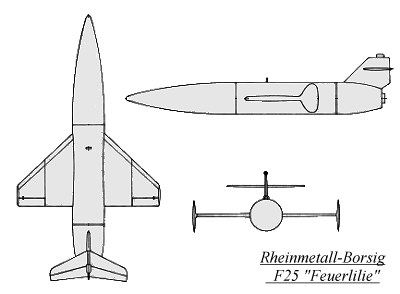 The "Feuerlilie" (Fire Lilly) anti-aircraft missile program was
begun as a high-speed research program by the Forschungsführung (the
Research Control section)of the RLM to obtain data for future guided missiles.
In order to obtain funding, it was decided to design the "Feuerlilie"
as a flak or anti-aircraft missile. The "Feuerlilie" was designed
in two configurations, the F25 and F55, the number being the fuselage diameter
in centimeters, using the basic aerodynamic shapes developed by Dr. G.
Braun and A. Busemann of the Luftfahrtforschungsansalt (LFA).
The "Feuerlilie" (Fire Lilly) anti-aircraft missile program was
begun as a high-speed research program by the Forschungsführung (the
Research Control section)of the RLM to obtain data for future guided missiles.
In order to obtain funding, it was decided to design the "Feuerlilie"
as a flak or anti-aircraft missile. The "Feuerlilie" was designed
in two configurations, the F25 and F55, the number being the fuselage diameter
in centimeters, using the basic aerodynamic shapes developed by Dr. G.
Braun and A. Busemann of the Luftfahrtforschungsansalt (LFA).
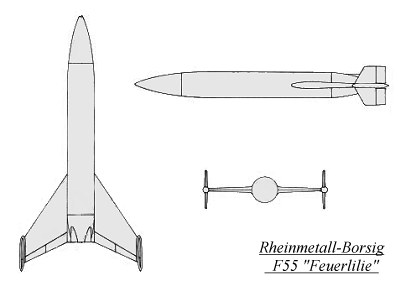 mounted
in a mid-fuselage position. There were small fins at the tips of the swept-back
wing, and there was a single fin at the rear of the fuselage having a high
mounted tailplane with elevators working together or differentially for
control. Power was supplied by a single Rheinmetall 109-505 solid diglycol
fuelled rocket motor which produced 500 kg (1100 lbs) of thrust for six
seconds. The F25 "Feuerlilie" was launched from an inclined ramp
(controlled by an LFA-designed autopilot) and from an aircraft (controlled
by a radio link). The first test launchings were made in April 1943 at
Leba and the island of Greifswalder Oie, near Peenemünde. Three missiles
were launched, of which one was a sucess. In July 1943, three more F25
"Feuerlilie" missile were test fired, all of which worked flawlessly
and gave the desired information.
mounted
in a mid-fuselage position. There were small fins at the tips of the swept-back
wing, and there was a single fin at the rear of the fuselage having a high
mounted tailplane with elevators working together or differentially for
control. Power was supplied by a single Rheinmetall 109-505 solid diglycol
fuelled rocket motor which produced 500 kg (1100 lbs) of thrust for six
seconds. The F25 "Feuerlilie" was launched from an inclined ramp
(controlled by an LFA-designed autopilot) and from an aircraft (controlled
by a radio link). The first test launchings were made in April 1943 at
Leba and the island of Greifswalder Oie, near Peenemünde. Three missiles
were launched, of which one was a sucess. In July 1943, three more F25
"Feuerlilie" missile were test fired, all of which worked flawlessly
and gave the desired information.
![]() Model photo of the F55 "Feuerlilie"
Model photo of the F55 "Feuerlilie"
F25
Span: 1.15 m (3' 9.25")
Length: 2.1 m (6' 10.7")
Max. Speed: 840 km/h (522 mph)
F55
Span: 2.5 m (8' 2.5")
Length: 4.8 m (15' 9")
Max. Speed: 1500 km/h (932 mph)
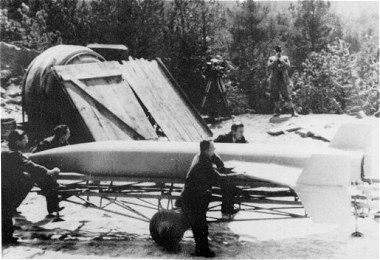 |
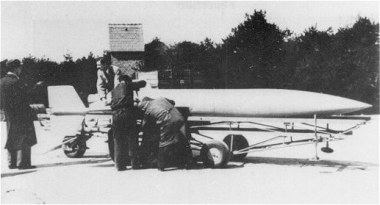 |
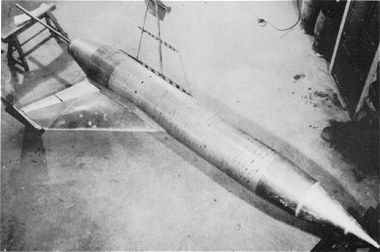 |
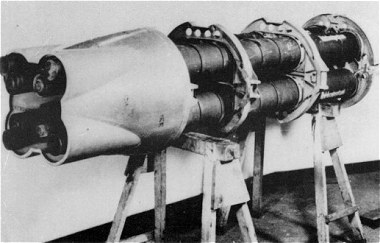 |
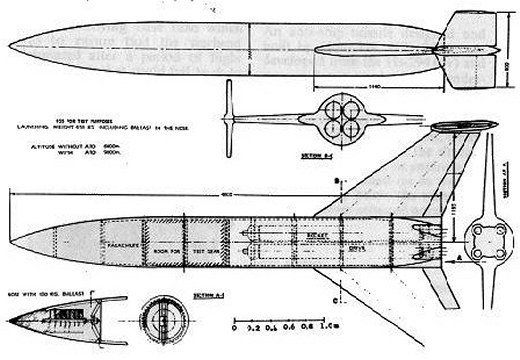
An Allied post-war drawing
of the F55 "Feuerlilie", showing some of the internal components....
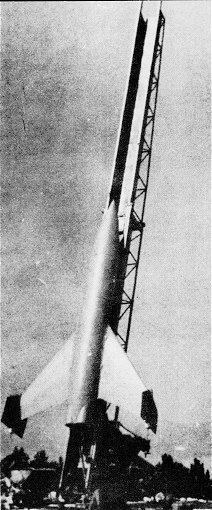 |
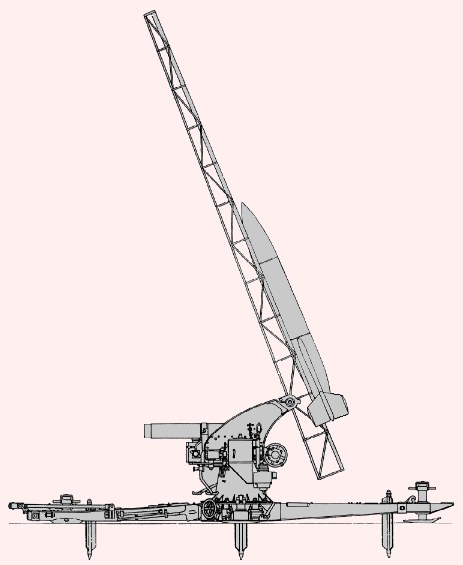 |
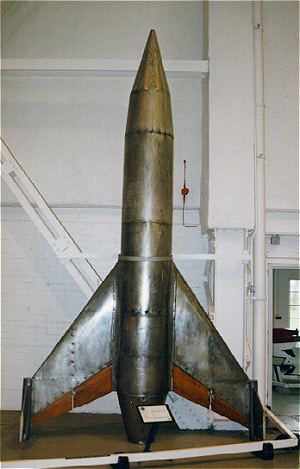
The Rheinmetall-Borsig F55 "Feuerlilie" at the Cosford Royal Air Force Museum in Shropshire, England.
Photo by Graham Causer, May 1998....